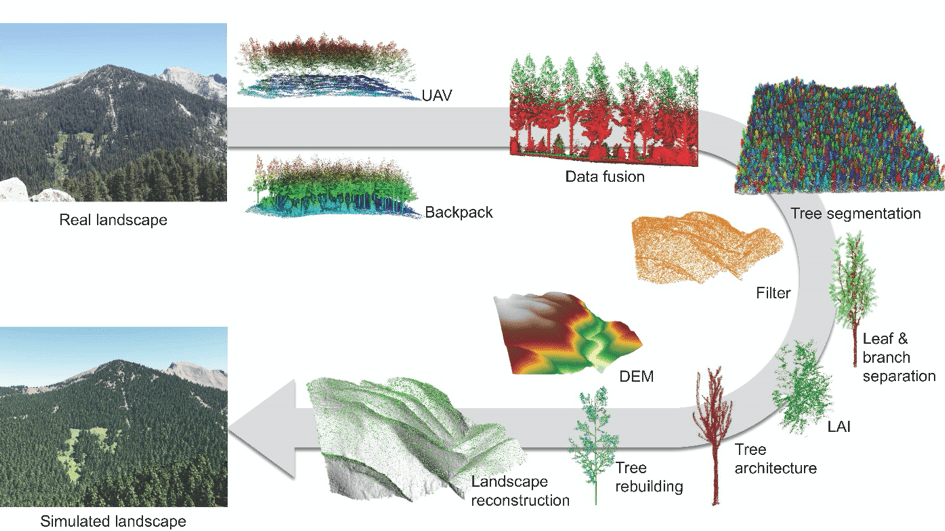

Individual trees are the basic element composition of a forest stand. The structure characteristic and spatial distribution of trees are the key factors to be surveyed in forest inventory. Lidar, as an emerging active remote sensing technology, provides an automatic, effective and accurate tool for deriving individual tree parameters. However, lidar data are composed of numerous unordered points, and identifying individual trees from them becomes an important but required first step for extracting forest structure parameters from lidar data. To solve this issue, we proposed a novel individual tree segmentation principle, which is based on the ecological metabolic theory and graph theory, and uses the spatial connectivity and density information to extract individual trees from lidar point clouds directly (Li et al., 2012; Jakubowski et al., 2013; Lu et al., 2014; Tao et al., 2015; Yang et al., 2019). Based on extracted individual tree point clouds, we further developed algorithms to extract essential structural parameters of concern in forest inventory (e.g., tree height, diameter at breast height, crown base height, crown volume, crown diameter, leaf area index, crown architecture traits, and biomass) hinging on the photogrammetry theory, graph theory, machine learning technique, and deep learning technique (Jakubowski et al., 2013; Tao et al., 2014; Tao et al., 2015; Su et al., 2016; Li et al., 2016; Zhao et al., 2016; Li et al., 2017; Su et al., 2017; Ma et al., 2017; Li et al., 2018; Luo et al., 2018; Li et al., 2020). Using the above-mentioned lidar-derived fine-scale forest parameters, we further developed a method to upscale forest inventory parameters through the fusion of multiplatform and multisource remote sensing data, which can largely reduce the “saturation effect” of traditional upscaling method only based on optical remote sensing data (Xue et al., 2017). This method has been successfully used to generate terrain elevation, tree height and biomass products from landscape to regional, national and global scales (Tao et al., 2014; Su et al., 2014; Li et al., 2015; Su et al., 2015; Su et al., 2016; Hu et al., 2016; Su et al., 2017; Guo et al., 2017; Zhao et al., 2018), which provide important data support for forest management and ecological monitoring.